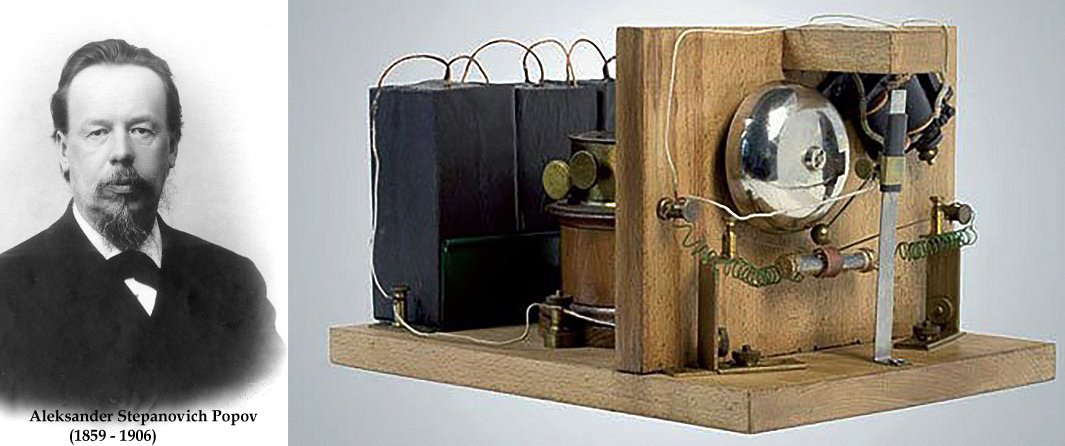MessageToEagle.com – On March 12, 1896, the first radiogram was sent by Russian physicist Alexander Stepanovich Popov. It traveled over 200 yards from one building of the St. Petersburg University to another and read “Heinrich Hertz” in Morse code.
Popov, devoted to exploration of high frequency electrical phenomena, was a Russian physicist. He is celebrated in his homeland and eastern European countries as the inventor of radio.
Evidently he built his first radio receiver, a lightning detector (1895), without knowledge of the contemporary work of the Italian inventor Guglielmo Marconi. The genuineness and the value of Popov’s successful experiments are not seriously doubted, but Marconi’s priority is usually conceded.
The first radiogram was based on multiple theoretical findings and discoveries in the area of electro-magnetism, made by James Maxwell, who predicted the existence of radio waves.

Another researcher who contributed to this technological breakthrough, was Heinrich Hertz (1857-1894), who demonstrated that rapid variations of electric current could be projected into space in the form of radio waves similar to those of light and heat.
None of them, however, could suggest any plausible practical application for their discoveries. Popov was the first one to put all the accumulated knowledge to use.
Popov first announced creating a radio receiving set on May 7, 1895, at the Russian Physicochemical Society in St-Petersburg. This day was officially recognized as the Day of Radio in Russia. Popov presented a device which could receive and process both electro-magnetic and radio waves. The variations were produced by the Hertz oscillator.
After this success Popov resumed his work on bettering the transmission and focused on enlarging the distance of the signal.
According to Western sources, Guglielmo Marconi, an Italian scientist was the inventor of radio. He first announced the possibility of the wireless telegraph in June, 1896, three months after Popov’s experiment. By 1899 he flashed the first wireless signal across the English Channel and two years later received the letter ‘S’, telegraphed from England to Newfoundland.
Possessing outstanding entrepreneurial skills, he immediately set up his own firm, teamed up with the English postal service, and patented the use of the electromagnetic waves for communication. All of Marconi’s works were accessible and widely publicized, while Popov’s achievements soon became the property of the Russian Navy.
He didn’t patent any of his devices, and his research couldn’t be disclosed as confidential.
MessageToEagle.com
Expand for referencesReferences:






